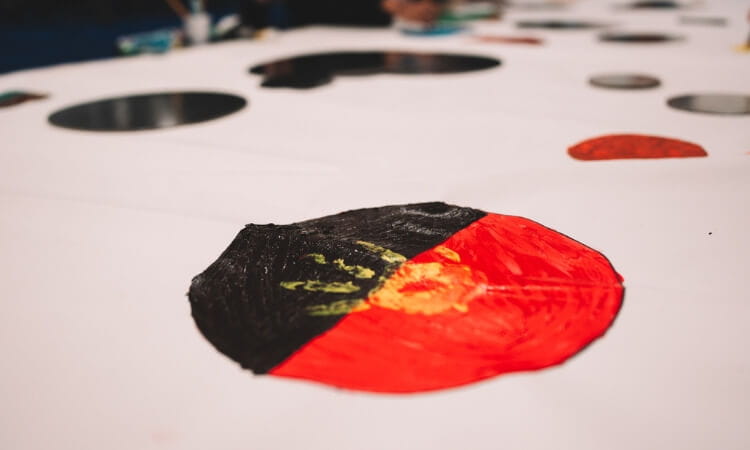Educators should familiarise themselves with the foundational values and beliefs that inform Indigenous Knowledges in order to integrate them into their teaching in a meaningful way, write three First Nations lecturers.
Contemporary Australian educators are required to embed Indigenous Knowledges through the curriculum and pedagogies they provide to their students. As First Nations educators, we advocate for localised and community-informed approaches to teaching and learning but we also acknowledge that a few big-picture approaches can be understood and applied in broader terms. We would suggest educators familiarise themselves with these big-picture concepts if they want to integrate Indigenous Knowledges in a holistic and meaningful way.
The best way to develop the competence for integrating Indigenous Knowledges is to understand the foundational values and beliefs that inform them. The Big Five is a simple framework consisting of five core strategies for teaching and learning that embody First Nations knowledges and ways of knowing, being and doing.
What are Indigenous Knowledges?
Indigenous Knowledges are a set of cultural understandings, beliefs, values and practices that have been shaped through the relationships between people, nature and spirituality.
Indigenous scholars intentionally use the plural form, as we have done here, to recognise the diversity of Indigenous Knowledges.
Despite the great diversity between and across First Nations communities, some commonalities in Indigenous ways of knowing have emerged through Indigenous peoples’ close relationship with the environment. From an Indigenous worldview, knowledge is holistic, cyclical and dependent on connections, supporting the idea of many truths, and that all things are alive and equal.
The land is viewed as sacred and the relationship between people and the spiritual world is of relevance. This and other discussions of Indigenous worldviews highlight a strong relational focus that promotes the production and transmission of knowledge through people and entities coming together to support, strengthen and sustain each other.
Why are Indigenous Knowledges valuable for education?
The inclusion of IK is important for positive Indigenous student outcomes and is central to the self-determined aspirations and actions of Indigenous educators and communities. Indigenous Knowledges are valuable resources that can educate and enrich all students, as well as their communities. Produced through dialogue and experience and transmitted through story, art and interactions with people and Country, the Indigenous approach to knowledge injects humility and humanity into teaching and learning processes. “Ways of knowing” and traditional approaches to teaching and learning for Indigenous peoples are spiritual, holistic, cyclical and relational and are profoundly different from mainstream educational approaches, where spirit is largely absent and knowledge is comprised of facts to be poured from the teacher into the minds of learners. Indigenous Knowledges are a valuable alternative with the potential to provide a balanced teaching and learning environment that promotes interactive learning approaches and nurtures intuition and spirit as well as mind.
Introducing the Big Five
- Knowledge is holistic: Knowledge need not be compartmentalised and separate; there is overlap. Intuitive, spiritual and intellectual knowledge is all valued. Practical example for teaching: project-based work that combines disciplines and considers holistic outcomes.
- Knowledge is connected: Knowledge is not isolated but connected to beliefs, ancestors, community, Country and spirituality. As educators we are always accountable to these connections. We don’t “own” knowledge; we carry and pass it on. Knowledge is meaningful and connected to living well. Practical examples for teaching: incorporating Acknowledgement of Country into the learning environment or using place-based pedagogies that develop all the senses and our connections to nature.
- Knowledge is interactive: Everyone is deemed a lifelong learner, and we are all teachers at times, also. None of us is an empty vessel to fill; we all have experiences, thoughts and ideas to contribute to our collective knowledge. Observing, practising and conversing are all useful tools for developing knowledge. Practical examples for teaching: yarning (storytelling) circles, mapping or visualising the learning process or collaborative problem-solving.
- Knowledge is process-focused: Indigenous ways of knowing value process over outcome and consider the journey to be as significant, if not more so, as the destination. Learning should be transformative and recognise significant milestones along the way. Practical example for teaching: critical self-reflection, enquiry-based learning or peer reviewing.
- Knowledge through story: A short, simple story can provide a lesson or moral that stays with us for a lifetime (The Boy Who Cried Wolf, for example). This is the power of story. Storytelling helps us relate, connect, empathise, share and understand others. It allows humility and humanity to play a role in teaching and learning. Practical examples for teaching: guest speakers, community service or engagement, engaging with story via arts such as literature, film or place (such as a museum).
A broader application of the Big Five framework
While the Big Five concepts are presented and discussed here within an educational context and with the intent of providing information related to teaching and learning that integrates Indigenous Knowledges and ways of knowing, these big-picture ideas and examples may be just as useful in other contexts where Western and Indigenous peoples and ways of knowing intersect. Being exposed to an alternative knowledge system and ways of knowing can only expand and enrich our understanding, providing greater access and diverse opportunities in education and beyond.
Given First Nations peoples’ long-standing relationships with place facilitated by knowledge systems developed over tens of thousands of years, we argue that Indigenous Knowledges can provide important new directions, approaches and outcomes for culturally sustaining Australian educational reform and a paradigm shift that can expose students to new perceptions and possibilities in education, and in life, potentially to the benefit of all.



